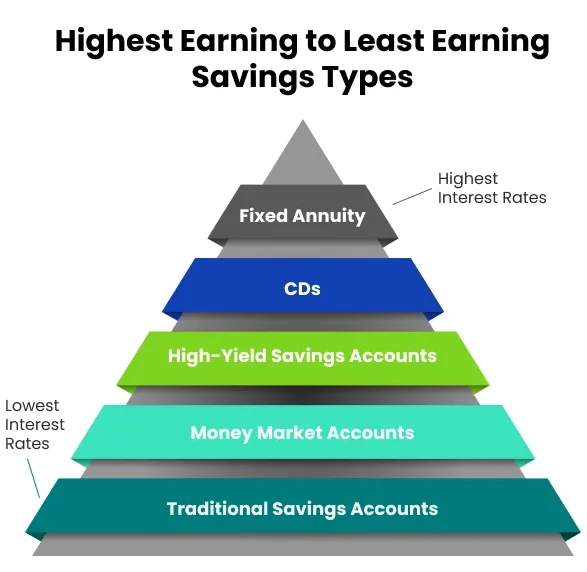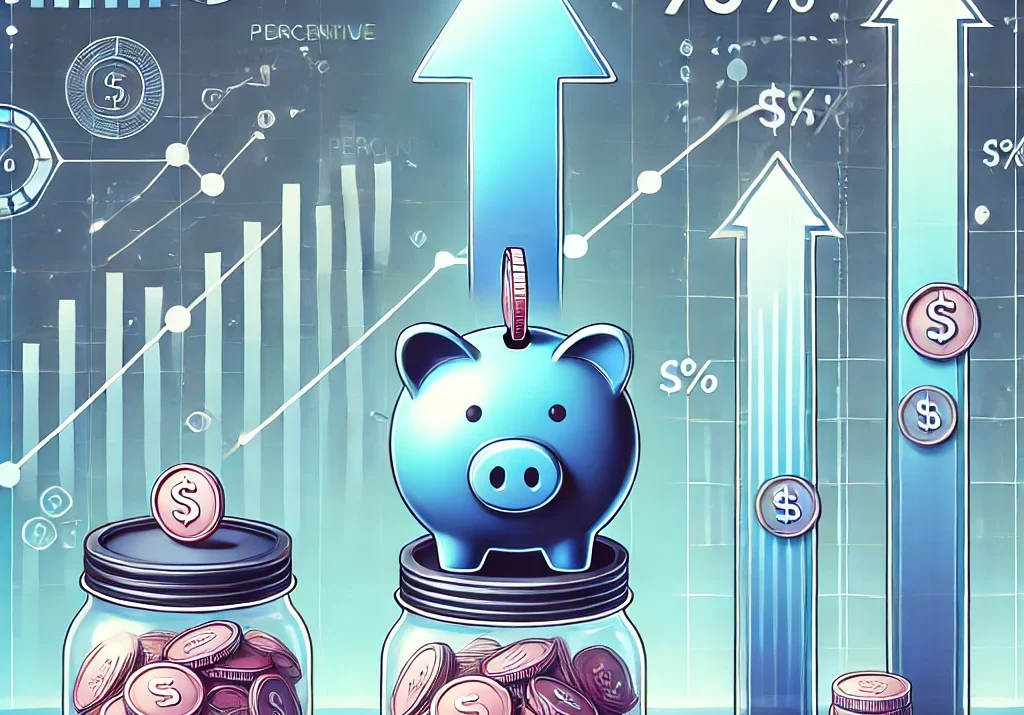Savings accounts can vary greatly in how much interest they earn, with certain types designed specifically to maximize your returns. If you’re aiming to grow your savings, choosing the right account and understanding factors like interest compounding, Annual Percentage Yield (APY), and account fees is essential. Here’s a detailed look at which types of savings accounts can help you earn the most.
Types of Savings Accounts That Earn the Most Interest
When choosing a high-yield savings account, look for options with frequent compounding and high APYs. Here are the types of accounts likely to yield the best returns:
1. High-Yield Online Savings Accounts
High-yield online savings accounts often offer APYs that are several times higher than those of traditional bank savings accounts. Online banks, like Ally, Marcus by Goldman Sachs, and Discover, have lower overhead costs and can pass on savings in the form of higher APYs, often between 3% and 5% APY, depending on current interest rates.
- Pros: High APYs, often with no minimum balance requirements and few fees.
- Cons: Access may be limited to online banking, with fewer or no physical branches.
- Example: A $10,000 balance in a high-yield savings account with 3.5% APY would grow to $10,350 after one year with daily compounding.

2. Money Market Accounts (MMAs)
Money Market Accounts combine elements of checking and savings accounts, offering relatively high APYs, check-writing capabilities, and debit card access. Many MMAs offer APYs between 0.5% and 4%, depending on the bank and account type.
- Pros: Competitive interest rates with more liquidity than traditional savings accounts.
- Cons: Often require higher minimum balances to earn the advertised APY.
- Example: With an APY of 3% on a $10,000 balance, a money market account would yield $300 in interest over a year.
3. Certificates of Deposit (CDs)
Certificates of Deposit (CDs) offer fixed interest rates for set terms, generally providing higher APYs for longer terms. Typical APYs range from 4% to 5% on CDs, particularly for terms of one year or more. However, funds are locked in for the term, with penalties for early withdrawal.
- Pros: Predictable returns and often higher APYs than regular savings accounts.
- Cons: Limited liquidity, as withdrawing before the term ends can result in penalties.
- Example: A 12-month CD with a 5% APY on a $10,000 deposit would yield $500 by the end of the term.
4. Fixed Annuities
A fixed annuity is a type of long-term savings product offered by insurance companies that provides a guaranteed interest rate over a set term and typically has the highest interest rates. Fixed annuities are ideal for those looking for predictable growth without market risk. It also allows you to save for retirement or as part of your overall retirement plan.
- Interest Rates: Generally between 3% and 5%, depending on the term length.
- Tax Benefits: Earnings grow tax-deferred until withdrawal, allowing your balance to compound faster.
- Safety: Fixed annuities are insulated from market fluctuations, offering stability for conservative investors.
- Commitment: These accounts require a long-term commitment, with early withdrawals often subject to penalties.
While they offer strong returns, fixed annuities are best suited for funds that don’t need frequent access, as they’re less liquid than other savings options.

How Compound Interest Affects Savings Accounts
Compound interest is a powerful factor that can significantly enhance your savings over time. In savings accounts with compound interest, the interest earned is periodically added to your balance, allowing you to earn interest on your interest. Accounts with daily compounding will earn the most, followed by monthly, quarterly, and annual compounding accounts.
Example of Compound Interest Growth
If you invest $10,000 in an account with a 3.5% APY and daily compounding, you’d earn more than if the account compounded monthly. Daily compounding means you earn a bit more each day, so by the end of the year, the balance would be slightly higher due to the compounding effect.
Why Choose Accounts with Daily Compounding?
Daily compounding allows interest to grow at a faster rate, making a substantial difference over time. For example, high-yield savings accounts that offer daily compounding can yield considerably more than accounts that only compound monthly or quarterly.
Comparing APY vs. Interest Rate in Savings Accounts
When choosing a high-yield savings account, it’s essential to understand the difference between APY and interest rate:
- APY (Annual Percentage Yield): APY includes the effect of compounding over a year, showing the total amount of interest you’ll earn annually.
- Interest Rate: This is the base interest rate of the account without factoring in compounding.
Accounts with higher APYs will generally yield more, especially if they compound daily. For example, if you’re comparing two accounts—one with a 3.5% APY and another with a 3% APY—the 3.5% APY will yield more in the long term, even if both have similar nominal interest rates.
Avoiding Fees That Lower Your Earnings
Account fees can significantly impact your savings. Some fees to watch out for include:

- Monthly Maintenance Fees: Some banks charge maintenance fees on savings accounts, which can eat into your earnings. Opt for accounts with no monthly fees to maximize returns.
- Withdrawal Limits and Penalties: Exceeding the federally regulated monthly withdrawal limit on savings accounts may incur additional fees. Some accounts, like money market accounts, offer limited checking features but also come with withdrawal limitations.
- Minimum Balance Requirements: Certain high-yield savings accounts require a minimum balance to earn the highest APY. Ensure you can meet this balance to avoid fees or lower interest rates.
How to Maximize Earnings on a Savings Account
Here are a few tips to make the most of your savings:
- Look for High APYs: Choose accounts offering the highest APYs available, especially from reputable online banks.
- Prioritize Daily Compounding: Daily compounding adds more to your balance over time than monthly or quarterly compounding.
- Avoid Fees: Select accounts without monthly fees or high minimum balance requirements to ensure that fees don’t eat into your savings.
- Consider Laddering CDs: For CD accounts, consider creating a CD ladder by investing in CDs with different maturities to maintain access to your funds while earning higher APYs.
High-yield online savings accounts, money market accounts, and CDs with daily compounding offer some of the best returns in today’s market, allowing you to make the most of your savings while minimizing risk.
Related Article:
Which savings account will earn you the least money?
Sources:










